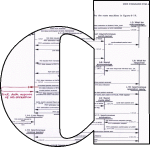
SYSTEMS AND SOFTWARE DEPENDABILITY
 | ||
Overview of the seminar
Dates and topics
Teaching Staff
On your presentations
Literature proposals
Overview of the seminar
In this seminar, dependable systems are discussed. As an introduction, we copy a paragraph from the book:
Dependability: basic concepts and terminology : in English, French, German, Italian and Japanese / J. C. Laprie
(ed.). – Wien : Springer, 1992. – (Dependable computing and fault-tolerant systems ; 5)
Dependability is defined as the trustworthines of a computer system such that reliance can justifiably be placed on the service it delivers.
“Dependable” has several aspects:
 | with respect to the readiness for usage, dependable means available; |
 | with respect to the continuity of service, dependable means reliable; |
 | with respect to the avoidance of catastrophic consequences on the environment, dependable means safe; |
 | with respect to the prevention of unauthorized access and/or handling of information, dependable means secure. |
The development of a dependable computing system calls for the combined utilization of a set of methods which can be classed into:
 | fault prevention: how to prevent fault occurrence or introduction; |
 | fault tolerance: how to provide a service complying with the specification in spite of faults; |
 | fault removal: how to reduce the presence (number, seriousness) of faults; |
 | fault forecasting: how to estimate the present number, the future incidence, and the consequences of faults. |
Dates and topics
| May 5 | 3.15 p.m. | Preparatory meeting, assignment of subjects in building 45, room 528 |
| July 16 | 12.00 noon | Hand in your written exposition |
| Date | Time | Main topic | Warmup | Speaker | Teacher |
|---|---|---|---|---|---|
| May 25 | 16.15 | Case study: Railway | Patriot missed Iraqi scuds | Michael Feld | David N. Jansen |
| 17.45 | Case study: Nuclear power plant | Martin Thielen | |||
| June 1st | 16.30 | Case study: Avionics | Warsaw airport plane crash | Taoufik Romdhane | |
| 18.00 | Case study: Space | Ariane 5 maiden flight | Frank Werner | ||
| June 8 | 16.30 | Fault trees | USS Vincennes shoots down an Iranian Airbus in 1988 | Osama Khan | Holger Hermanns |
| 18.00 | Dynamic fault trees | Mars climate orbiter crash 1999 | Stephan Schlicker | ||
| June 15 | 16.30 | Failure modelling | Andreas Wagner | ||
| 18.00 | Architectures | Therac-25 | Verena Schuler | ||
| June 29 | 16.30 | Distributed systems: Byzantine agreement, reliable broadcast | US/Canada Power Blackout 2003 | Mohammad Al-Rifai | David N. Jansen |
| 18.00 | Distributed systems: Clock synchronisation | Mansoor Jafry | |||
| July 13 | 16.30 | Formal models and verification 1 | Rotislav Rusev | Holger Hermanns | |
| July 20 | 16.30 | Security 1: Trustworthyness of the internet | Stilian Stanev | David N. Jansen | |
| 18.00 | Security 2: Needham–Schroeder protocol | AT & T long distance service fails, 1990 | Sven Bünte | Holger Hermanns |
All sessions take place in building 27.2, room H05 („Seminarraum 1“).
Teaching Staff
 | Holger Hermanns |
 | David N. Jansen, room 534 |
On your presentations
Before you present your actual topic, please present as a warm-up in about 10 minutes a “horror story” of a real failure in a software system that should have been dependable. You may get inspiration from a list in the Internet: here or here, but of course, your own ideas are very welcome!
Please do come along at least one week before your presentation to discuss the concept of your slides or your written exposition. The goal is to have the structure and a first idea of the contents of the presentation. (For a one-hour presentation, one calculates about 30 slides.)
Please hand in the final version your written exposition on July 16, at 12.00 noon the latest.
Conditions for grading: Presentation and written exposition; meet the above conditions (deadlines). The grade will be based on the quality of your presentation and exposition.
Literature proposals
Here, you will find some proposed literature for the seminar.
You have to use at least one source in addition to the ones proposed by us. If you find some proposal is not sensible, please consult with your teacher.
Case study: Railway
Case study: Nuclear power plant
Case study: Avionics
Case study: Space
Fault trees
Dynamic fault trees
Failure modelling
Architectures
Distributed systems: clock synchronisation
Distributed systems: Byzantine agreement, reliable broadcast
Formal models and verification 1
Security 1: Trustworthiness of the internet
Security 2: Needham-Schroeder protocol
Last change on June 22, 2004, by David N. Jansen.